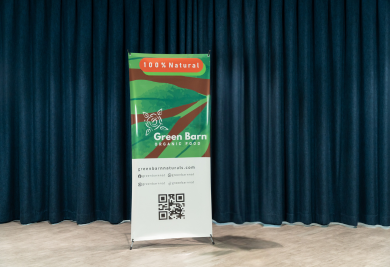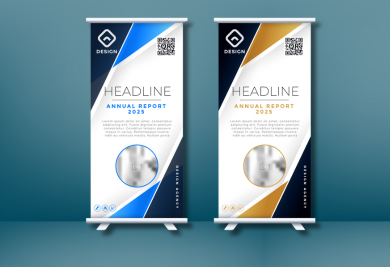Small as they may look, designing and printing name cards should not be taken lightly. In fact, they are also tricky to design and print. A name card should look professional, as it is the face of your brand, a representation of your company and also a great marketing tool. At Gogoprint, it is our role to advise our customers on the best possible ways to print the perfect name card.
So without further ado, let's look into the Dos and Don’ts in name cards!
The DO’s
1. Prioritize Readability over Creativity
We know, minimalism looks amazing on your name cards, but what good does it make if your customers are unable to read your contents? Your main priorities should be the readability of your card, before anything else. This mainly applies to fonts, the minimum type size of fonts should be no smaller than 6 points. Bear in mind as well, that extremely thin (light) fonts are also not recommended as they bear a risk to appear barely visible in printing.
Other than fonts, other elements such as lines and colors too play a role in affecting your name cards printing result. Clean lines are highly advised to be 0.25 pt at minimum, and colors must be used wisely so that your potential customers won’t have to squint to be able to see what’s going on in your cards!
2. Always use Process Colors (CMYK)
If your printed name card did not have your expected colors, it may have something to do with the color mode of your artwork. There are several color modes to use when designing any artwork, mainly RGB or CMYK.
The main color mode for printing will always be in process colors(CMYK), should your artwork be in any other color modes (eg. RGB), then the colors may not turn out to be what you wanted. CMYK represents a subtractive model, in which the three colors Cyan, Magenta and Yellow. The Key color Black, are successively printed against a white background.
For more elaborate explanation of the topic, feel free to check out our other blog. And more importantly, make sure to check the color modes of your name cards before printing!
3. ‘Social Distance’ your Contents
A good name card does not need a full contents of a book, it certainly does not need to be crowded as well. You know what they say, less is more! Put in your most relevant information (eg. your contacts, designation etc) and leave the extras to other mediums like websites. Having too much crammed text in a small space can be a turn-off to some people, and that is why your contents need social distancing too, you know. ;)
4. Apply Bleed in your Artwork
One of our blogs may have this covered. But what is Bleed? You ask. In printing, bleed is the extra part of the side of an artwork that gives printers a small space to cover the inaccuracies of printing. It is in fact difficult to print 100% exactly to the edge of a card. This is why applying bleed is necessary to leave little room for error when the trimming happens! For name cards, the common size for bleed would be in 3mm from the edge of your artwork.
The Don’ts
1. Hug the Edge
Does it feel scary to stand near the edge of a cliff? That is what’s happening to your contents as well. In other words, don’t place your contents very near to the edge of your card. Just like Bleed, we also have cutting margins to consider for any printed artworks.
As we said about how printing is not 100% accurate, it is risky to apply your information close to the sides. It is recommended to have a 3mm margin from the edge for name cards. This is due to the fact that the trimming inaccuracy can happen anywhere between the bleed and the safety margin. Cutting / Safety margins are pretty much “safety zones” that your content should not exceed to avoid accidents, like having your important information cut out of the card!
2. Use Raster Based Softwares
Unfortunately, softwares like photoshop is not the answer to everything, these programs may be handy but it is highly recommended not to use them for name cards. This is because the text / logo generated from Photoshop will always be exported as a “raster”, making your text / logo slightly pixelated as a result. To get sharp and clear printing of your cards, we would highly recommend using Vector based softwares, programs like Illustrator, Indesign, Canva or even Word / Powerpoint can support vector graphics.
Do refer to this blog for the difference between raster and vector.
3. Create Your Card with the Wrong Dimensions
It is highly advised to start your canvas exactly as the size to be printed. This is because starting at the wrong size might lead to unwanted results. For example, if you set your cards to be 8x5 cm while opting for a 9x5.4cm card, your content layout may have changes due to the auto resizing of our printers. Another common mistake would be setting your card dimensions bigger than usual (eg. 90x54cm), this would skew your perspective with your fonts and graphics!
So to avoid printing ‘accidents’ , if your cards are 9x5.4cm, you should set it as exactly 9x5.4cm. This applies to all kinds of sizes in name cards.
4. Use Borders
It is indeed awesome to have cool straight lines around your name cards. However, as pretty as it looks, it is generally advised against due to the inaccuracies of printing. One small wrong movement between the printing mechanics can sometimes cause your borders to look uncentralized. That is not to say that borders or frames aren’t allowed in name cards, we would never limit anyone’s creativity! But just to keep this in mind that great borders come with great liabilities. :)
Conclusion
The most unfortunate thing that can go wrong with your name card is the above mentioned mistakes and we don’t want that! Before you send your prized cards to us for printing, make sure you double check your content, or check out our other blog for the latest design trends in name cards.
Now that you’ve seen our DO’s and DON’Ts on name cards, you can now get started on name card printing with us in Gogoprint! Remember, the key of name card design is to keep it professional.


















